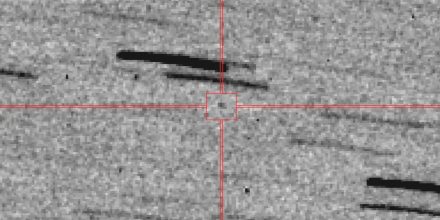NASA's $800M mission returns from Bennu's secrets
22.09.2023 posted by Admin

NASA initiated the OSIRIS-REx mission with an $800 million budget back in September 2016. The primary aim was quite clear, though not without its challenges: journey to a remote asteroid and bring back a piece of it. The spacecraft has almost completed its voyage and was recently sighted by scientists for the first time as it heads back.
The celestial body in question is called Bennu, a peculiar asteroid composed of debris, which scientists believe broke away from a larger asteroid between 700 million and 2 billion years ago, according to NASA's research. Bennu typically revolves about 105 million miles away from the Sun and completes its orbit roughly every 1.2 years. When OSIRIS-REx arrived to collect a portion of Bennu, the asteroid was around 200 million miles (322 million kilometers) away.
Between December 2018 and May 2021, OSIRIS-REx conducted thorough observations of Bennu, capturing images and collecting data on its rotation, shape, and composition. Bennu's rocky surface holds valuable clues about the origins of our solar system, but merely studying it from afar has its limitations, leading to the inception of the sample return project.
Aside from its "caught on camera" moment, the mission planners made adjustments to its trajectory last week to ensure that OSIRIS-REx is accurately aimed at the Earth's sample drop-off site. A minor tweak in the spacecraft's speed, just about 0.5 miles per hour (less than 1 kilometer per hour), was made to guarantee that OSIRIS-REx reaches Earth as intended, rather than passing by our home planet.
The spacecraft successfully collected a sample from Bennu in 2020 and embarked on its journey back to Earth in April 2021. On September 16, the European Space Agency's Optical Ground Station (OGS) telescope spotted the spacecraft when it was 2.9 million miles (4.66 million kilometers) away from Earth. The image we see is a composite of 90 separate 36-second exposures.
Originally designed to detect space debris, the ESA telescope, located on Tenerife Island, now plays a vital role in astronomical surveys and monitoring near-Earth asteroids, which can pose a threat when they approach our planet closely.
Bennu itself falls into the category of potentially hazardous asteroids (PHAs) due to a slim possibility of colliding with Earth in 161 years. However, the odds of such an event are exceedingly low. Instead, Bennu's most significant impact on Earth is expected to come in the form of the samples collected by OSIRIS-REx, shedding light on the universe's formation.
The celestial body in question is called Bennu, a peculiar asteroid composed of debris, which scientists believe broke away from a larger asteroid between 700 million and 2 billion years ago, according to NASA's research. Bennu typically revolves about 105 million miles away from the Sun and completes its orbit roughly every 1.2 years. When OSIRIS-REx arrived to collect a portion of Bennu, the asteroid was around 200 million miles (322 million kilometers) away.
Between December 2018 and May 2021, OSIRIS-REx conducted thorough observations of Bennu, capturing images and collecting data on its rotation, shape, and composition. Bennu's rocky surface holds valuable clues about the origins of our solar system, but merely studying it from afar has its limitations, leading to the inception of the sample return project.
Aside from its "caught on camera" moment, the mission planners made adjustments to its trajectory last week to ensure that OSIRIS-REx is accurately aimed at the Earth's sample drop-off site. A minor tweak in the spacecraft's speed, just about 0.5 miles per hour (less than 1 kilometer per hour), was made to guarantee that OSIRIS-REx reaches Earth as intended, rather than passing by our home planet.
The spacecraft successfully collected a sample from Bennu in 2020 and embarked on its journey back to Earth in April 2021. On September 16, the European Space Agency's Optical Ground Station (OGS) telescope spotted the spacecraft when it was 2.9 million miles (4.66 million kilometers) away from Earth. The image we see is a composite of 90 separate 36-second exposures.
Originally designed to detect space debris, the ESA telescope, located on Tenerife Island, now plays a vital role in astronomical surveys and monitoring near-Earth asteroids, which can pose a threat when they approach our planet closely.
Bennu itself falls into the category of potentially hazardous asteroids (PHAs) due to a slim possibility of colliding with Earth in 161 years. However, the odds of such an event are exceedingly low. Instead, Bennu's most significant impact on Earth is expected to come in the form of the samples collected by OSIRIS-REx, shedding light on the universe's formation.